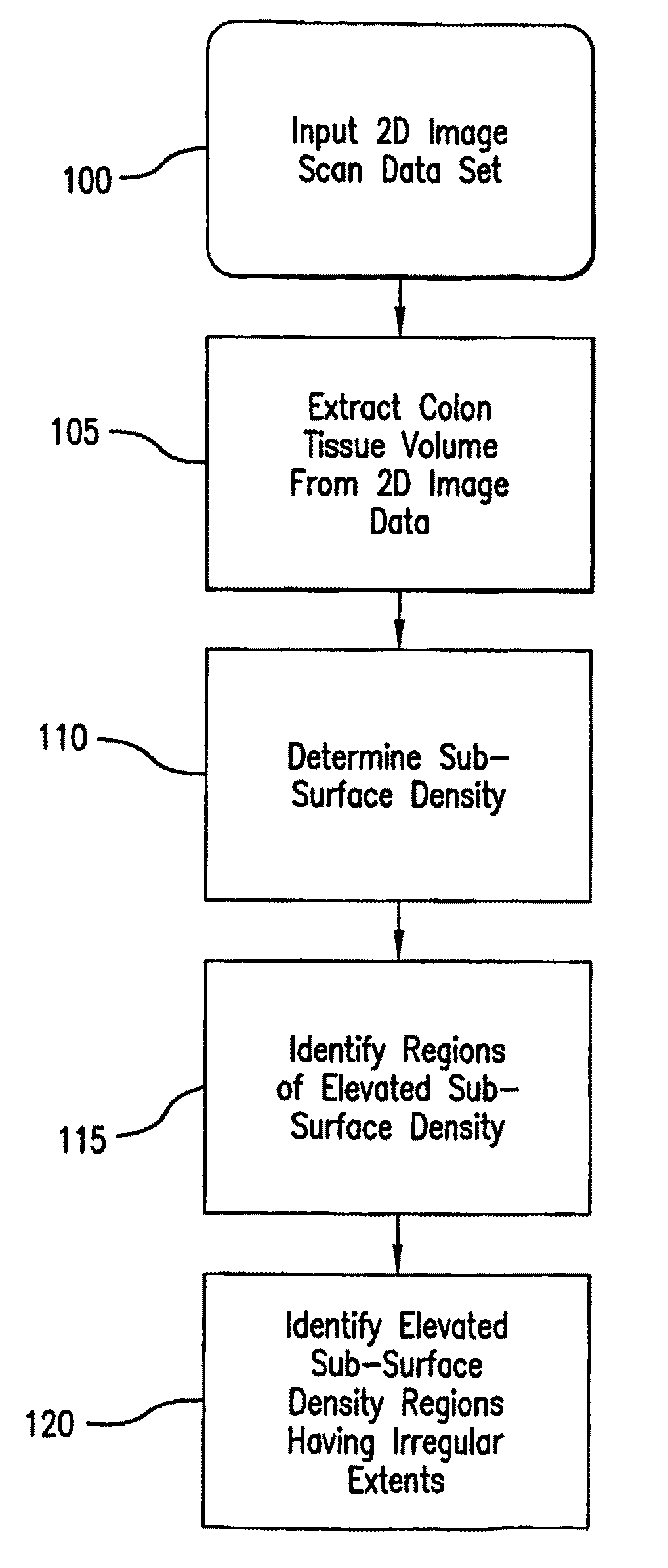System and method for computer aided polyp detection
a computer-aided polyp and detection system technology, applied in the field of system and method for computer-aided polyp detection, can solve the problems of time-consuming and laborious colon inspection, difficult automatic detection of colonic polyps, and high labor intensity
- Summary
- Abstract
- Description
- Claims
- Application Information
AI Technical Summary
Benefits of technology
Problems solved by technology
Method used
Image
Examples
Embodiment Construction
[0030]An overview of a preferred embodiment of the present method for computer aided detection (CAD) of polyps is shown in the simplified flow chart of FIG. 1. The method assumes that appropriate 2D image data has been acquired, such as through the use of a spiral CT scan or other suitable method known in the art of virtual colonoscopy (step 100). From the 2D image data, the colon tissue volume is extracted in step 105, in a manner generally known in the art. After the colon tissue volume has been extracted, the sub-surface density can then be determined (step 110). As is explained in further detail below, the step of determining the sub-surface density is preferably performed on a conformal flattened mapping of the colon surface. The sub-surface density can be determined by integrating voxel values using a ray casting technique which steps through the surface of the colon wall into the depths of the colon tissue and accumulates the voxel values along the ray.
[0031]After the sub-sur...
PUM
 Login to View More
Login to View More Abstract
Description
Claims
Application Information
 Login to View More
Login to View More - R&D
- Intellectual Property
- Life Sciences
- Materials
- Tech Scout
- Unparalleled Data Quality
- Higher Quality Content
- 60% Fewer Hallucinations
Browse by: Latest US Patents, China's latest patents, Technical Efficacy Thesaurus, Application Domain, Technology Topic, Popular Technical Reports.
© 2025 PatSnap. All rights reserved.Legal|Privacy policy|Modern Slavery Act Transparency Statement|Sitemap|About US| Contact US: help@patsnap.com



